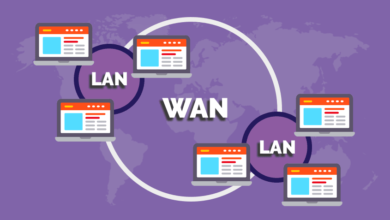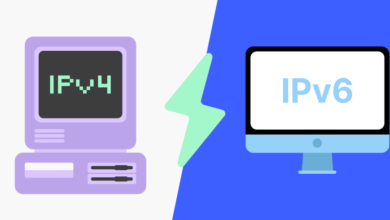Cloud Networking vs Traditional Networking (and How Does it Work)?

Is your network built to keep pace with today’s digital demands? In the Cloud Networking vs Traditional Networking debate, this question lies at the heart of transformative decision-making. Traditional networks, bound by physical hardware and fixed locations, are now facing competition from cloud networking’s agile, virtual infrastructure. Imagine a system that scales on command, enabling businesses to cut costs, boost flexibility, and enhance security—all without the limitations of on-premises equipment. Cloud networking redefines connectivity, offering a streamlined, powerful solution that adapts as you grow. Curious about how these two approaches stack up and which might be the game-changer for your organization? Let’s dive in.
Table of Contents
What is Cloud Networking?

Cloud networking is a transformative model where network resources, including connectivity, management, and security, are hosted in the cloud instead of on-premises hardware. By leveraging the vast infrastructure of cloud providers, cloud networking enables organizations to operate with unmatched flexibility, scalability, and efficiency.
Unlike traditional setups, cloud networks don’t require costly, physical data centers, making it easy for companies to manage data flow, user access, and security protocols from anywhere. In the Cloud Networking vs Traditional Networking debate, cloud networking stands out for its dynamic nature—adapting to shifting demands, supporting global collaboration, and simplifying network management. It empowers businesses to scale seamlessly, ensuring consistent performance without the traditional networking constraints. This approach not only reduces operational overhead but also unlocks new possibilities in a hyper-connected, data-driven world.
What is Traditional Networking?
Traditional networking refers to the conventional infrastructure where network resources and data are managed through physical hardware, such as servers, routers, and switches, typically located on-premises or in dedicated data centers. This model requires significant capital investment and ongoing maintenance to keep equipment up-to-date and secure. In Cloud Networking vs Traditional Networking, traditional networks are often seen as less flexible due to their reliance on fixed hardware, limiting scalability and making it challenging to adapt quickly to new demands. However, traditional networking remains valued for its direct control over infrastructure, which can enhance data privacy and allow for fine-grained security measures.
While traditional networks require careful capacity planning and hardware management, they offer predictability and stability, appealing to organizations with strict compliance requirements or specific data control needs. As a result, traditional networking continues to be a solid choice for many legacy systems and industries with rigorous regulatory standards.
In the age of digital transformation, the choice between Cloud Networking vs Traditional Networking is not just about technology; it’s about the future readiness of your organization.
Why is Cloud Networking Important?
- Enhanced Flexibility
Cloud networking allows organizations to adapt swiftly to changing demands without investing in new hardware. Network resources can be scaled up or down as needed, which is invaluable for businesses experiencing rapid growth or fluctuating traffic. - Global Connectivity
By hosting networks in the cloud, businesses can expand their operations globally with ease. Cloud networking ensures seamless connectivity and a consistent user experience across different regions. - Reduced Operational Burdens
With maintenance, updates, and infrastructure management handled by cloud providers, IT teams are free to focus on strategic projects and innovation rather than routine upkeep. - Improved Reliability
Cloud networking leverages redundant systems across multiple data centers, which minimizes downtime and enhances network performance, supporting 24/7 operations. - Cost-Efficiency
Unlike traditional networking, cloud networking operates on a pay-as-you-go model, enabling businesses to pay only for the resources they use. This reduces capital expenditure on physical infrastructure. - Advanced Security
Cloud providers invest in state-of-the-art security measures, offering protection against cyber threats and keeping up with compliance standards. This security advantage reduces the complexity of managing security in-house. - Support for Collaboration and Innovation
Cloud networking fosters real-time collaboration and enables teams to work seamlessly from anywhere, promoting agile and innovative approaches within the organization.
Cloud Networking vs. Traditional Networking Models
| Aspect | Cloud Networking | Traditional Networking |
| Flexibility | Offers exceptional flexibility; organizations can quickly scale resources up or down based on real-time demands. This adaptability allows for rapid response to market changes, seasonal traffic spikes, or project-specific needs without lengthy procurement processes. | Provides limited flexibility; scaling often requires significant planning, purchasing, and installing additional hardware, which can lead to downtime and disruptions during the transition. |
| Infrastructure | Utilizes a virtualized infrastructure managed by cloud providers, allowing for distributed data centers that enhance redundancy and load balancing. This decentralization supports high availability and faster data access globally. | Relies on physical, on-premises hardware such as dedicated servers, routers, and switches located in a centralized data center, making it prone to localized failures and geographic constraints. |
| Cost Structure | Operates on a pay-as-you-go model, which means businesses only pay for the resources they use, minimizing waste. This model can lead to lower operational costs, as companies can avoid hefty capital expenditures associated with physical infrastructure. | Involves high capital expenditure; organizations must invest heavily upfront in hardware and often face ongoing costs for maintenance, upgrades, and energy consumption. |
| Maintenance | Maintenance and updates are typically handled by the cloud provider, alleviating the need for extensive in-house IT resources. Providers continuously update their infrastructure and security measures, ensuring that businesses benefit from the latest technology without direct involvement. | Requires in-house management, which includes regular maintenance, troubleshooting, and upgrades. This can divert IT resources from strategic initiatives to routine operational tasks. |
| Global Accessibility | Accessible from anywhere with an internet connection, making it ideal for remote work and geographically distributed teams. This global accessibility fosters collaboration and enables businesses to operate efficiently across multiple regions. | Limited by physical location; accessing the network remotely often requires VPNs and can be complicated, making it less ideal for businesses with employees working from different locations. |
| Reliability and Uptime | Generally high reliability, thanks to redundancy across multiple data centers. Most cloud providers offer service level agreements (SLAs) guaranteeing high uptime percentages (often 99.9% or higher), reducing the risk of downtime significantly. | Dependence on local hardware and infrastructure can lead to greater downtime risks. If a physical component fails, the entire network can be affected, resulting in potential disruptions to business operations. |
| Security and Compliance | Enhanced security features provided by cloud services, including advanced encryption, continuous monitoring, and compliance with international standards. Cloud providers often undergo regular audits and offer compliance certifications (e.g., GDPR, HIPAA) that can benefit client organizations. | Direct control over security measures allows for tailored configurations; however, it often requires more manual updates and compliance management. This can lead to vulnerabilities if not maintained diligently. |
| Implementation Speed | Rapid deployment capabilities enable businesses to set up networks in a matter of minutes to hours, allowing for quick onboarding of new applications or services. This speed can be critical for businesses needing to launch new initiatives swiftly. | Slower deployment due to the necessity of installing and configuring physical hardware. Implementation can take weeks or even months, depending on the complexity of the infrastructure and the availability of resources. |
| Scalability | Highly scalable, with the ability to expand capacity in real time without needing additional hardware. This makes it suitable for businesses experiencing fluctuating workloads or rapid growth. | Limited scalability requires organizations to predict their needs accurately and invest in hardware ahead of time. This can lead to either over-provisioning (resulting in wasted resources) or under-provisioning (leading to performance issues). |
| Innovation Support | Supports agile operations and rapid technological adoption, enabling businesses to implement new solutions quickly and efficiently. The ability to experiment with emerging technologies without significant investment is a critical advantage in a competitive market. | Constrained by physical systems, making it more challenging to support fast-paced innovation. Upgrading traditional infrastructure often involves lengthy procurement and installation processes that can stifle agility. |
How Cloud Networking Works
- Virtualization of Resources
Cloud networking begins with the virtualization of network resources, which allows multiple services to operate on the same physical infrastructure. This creates a flexible environment where resources like storage and processing power can be allocated dynamically based on demand. - Global Data Centers
Cloud service providers deploy extensive networks of data centers around the world. This global distribution enables users to access resources from virtually anywhere, improving latency and ensuring high availability. - Internet Connectivity
Users connect to cloud networks via the internet, utilizing secure connections (such as VPNs or direct links) to ensure data integrity and confidentiality. This connectivity allows for real-time access to applications and data, facilitating collaboration across geographic boundaries. - Dynamic Traffic Routing
Advanced algorithms and technologies manage data traffic through the cloud network. Intelligent routing directs data to the most efficient paths, optimizing performance and reducing congestion, which contrasts sharply with the fixed pathways of traditional networking. - Software-Defined Networking (SDN)
Cloud networking employs SDN to separate the control plane from the data plane, allowing for centralized management of network resources. This separation enhances flexibility and enables quick adjustments to network configurations based on real-time requirements. - Network Functions Virtualization (NFV)
NFV virtualizes network services traditionally run on hardware, such as firewalls and load balancers. This innovation allows for the rapid deployment of services without the need for physical devices, significantly enhancing scalability. - Real-Time Resource Management
Cloud networking provides real-time visibility and control over resources, enabling organizations to monitor usage, adjust allocations, and optimize performance dynamically. This capability is essential for responding quickly to changing business needs. - Enhanced Security Protocols
Cloud networks implement advanced security measures, including encryption, identity management, and continuous monitoring. These protocols protect data integrity and compliance, addressing vulnerabilities that might arise in traditional networking setups. - Seamless Integration
Cloud networking integrates effortlessly with various applications and services, allowing organizations to adopt new technologies quickly. This integration supports innovation and ensures that businesses can respond to market demands effectively. - Cost-Effective Scaling
Businesses can scale their network resources up or down without significant investments in hardware, thanks to the pay-as-you-go model of cloud networking. This flexibility enables companies to optimize costs while expanding their capabilities as needed.
Embracing Cloud Networking vs Traditional Networking can redefine how businesses operate, offering unparalleled flexibility and efficiency in a rapidly changing marketplace.
Benefits of Cloud Networking
1- Scalability and Flexibility
Scalability and flexibility are hallmark advantages of cloud networking, setting it apart in the Cloud Networking vs Traditional Networking landscape. In cloud environments, organizations can effortlessly scale their resources up or down in real-time, responding dynamically to shifting demands. This agility eliminates the cumbersome processes associated with traditional networking, where expansion often involves significant capital expenditure and lengthy installation timelines. With cloud networking, businesses can deploy additional storage, bandwidth, or computing power in a matter of clicks, ensuring that resources align perfectly with operational needs. This adaptability not only fosters innovation but also significantly enhances competitive advantage in today’s fast-paced market.
2- Cost-efficiency
Cost-efficiency is a critical advantage of cloud networking that fundamentally alters the economics of IT infrastructure. In the Cloud Networking vs Traditional Networking debate, cloud solutions offer a compelling pay-as-you-go model, allowing businesses to only pay for the resources they actually use. This eliminates the hefty upfront capital expenditures associated with traditional networking, where organizations must invest in physical hardware and ongoing maintenance. Moreover, cloud networking reduces operational costs by minimizing the need for extensive IT staff and infrastructure upkeep. The result is a streamlined financial approach that empowers organizations to allocate funds more strategically, enhancing their ability to invest in innovation and growth.
3- Performance and Reliability
Performance and reliability are pivotal aspects that distinguish cloud networking from its traditional counterparts. In the Cloud Networking vs Traditional Networking arena, cloud solutions typically offer superior performance due to their ability to leverage vast, interconnected data centers. This architecture ensures low latency and high-speed access, enhancing user experiences across applications. Furthermore, cloud providers implement robust redundancy measures and failover systems, dramatically increasing reliability and minimizing downtime. Unlike traditional networking, where a single point of failure can disrupt operations, cloud networks are designed for resilience. This reliability enables organizations to maintain uninterrupted services, essential for today’s fast-paced digital landscape.
4- Security and Compliance
Security and compliance are paramount concerns in the ever-evolving digital landscape. In the Cloud Networking vs Traditional Networking discussion, cloud networking often excels due to its sophisticated security frameworks. Leading cloud providers invest heavily in state-of-the-art encryption, continuous monitoring, and advanced threat detection systems to safeguard data integrity. Additionally, they adhere to stringent regulatory standards, ensuring compliance with industry regulations such as GDPR and HIPAA. This proactive approach to security significantly mitigates risks associated with data breaches. In contrast, traditional networking can leave organizations vulnerable, as maintaining robust security measures requires considerable resources and expertise, often resulting in gaps that could be exploited.
5- Innovation and Agility
Innovation and agility are vital in today’s rapidly changing business environment. In the Cloud Networking vs Traditional Networking debate, cloud networking emerges as a catalyst for transformative ideas. Its flexible architecture allows organizations to experiment with new applications and technologies without the constraints of physical hardware. This environment fosters rapid deployment, enabling businesses to launch new services or adapt existing ones swiftly in response to market demands. Moreover, cloud networking’s scalability supports innovation by providing the necessary resources on demand, ensuring that companies can scale their initiatives without delay. This agility not only enhances competitive advantage but also cultivates a culture of continuous improvement and experimentation.
Conclusion
In conclusion, the debate of Cloud Networking vs Traditional Networking encapsulates a fundamental shift in how organizations approach their IT infrastructure. Cloud networking offers a wealth of advantages, including enhanced scalability, cost efficiency, and the ability to innovate rapidly. These features empower businesses to stay agile in an ever-changing market landscape. Conversely, traditional networking often confines organizations within rigid structures, leading to higher costs and slower response times. As the digital landscape continues to evolve, embracing cloud networking is not merely an option; it is a strategic imperative that fosters resilience and positions organizations for future growth and success.
The shift from Cloud Networking vs Traditional Networking marks a new era where agility, scalability, and innovation become the cornerstones of successful business strategies.
FAQs: Cloud Networking vs Traditional Networking
- What is the primary difference between Cloud Networking and Traditional Networking?
Cloud Networking utilizes virtual resources hosted on the internet, while Traditional Networking relies on physical infrastructure and hardware within a localized environment. - How does scalability differ in Cloud Networking vs Traditional Networking?
Cloud Networking allows for on-demand resource scaling, enabling businesses to quickly adjust their IT capabilities, whereas Traditional Networking typically requires significant time and investment to expand infrastructure. - What are the cost implications of Cloud Networking vs Traditional Networking?
Cloud Networking generally operates on a pay-as-you-go model, reducing upfront costs and allowing for budget flexibility, while Traditional Networking involves substantial initial capital expenditure and ongoing maintenance costs. - Which networking model offers better security: Cloud Networking or Traditional Networking?
Cloud Networking often provides enhanced security features, including advanced encryption and compliance with regulations, while Traditional Networking may have vulnerabilities due to outdated security measures. - In terms of performance and reliability, how do Cloud Networking and Traditional Networking compare?
Cloud Networking typically offers superior performance and reliability due to its distributed architecture and redundancy, whereas Traditional Networking can be prone to failures caused by centralized hardware dependencies. - Can businesses integrate new technologies more easily with Cloud Networking vs Traditional Networking?
Yes, Cloud Networking allows for seamless integration of new technologies and applications, fostering innovation, while Traditional Networking often involves complex upgrades and compatibility challenges. - What advantages does Cloud Networking offer over Traditional Networking regarding innovation and agility?
Cloud Networking facilitates rapid deployment and iteration of new services, promoting a culture of innovation, whereas Traditional Networking can hinder agility due to its rigid infrastructure and slower implementation processes. - Is Cloud Networking suitable for all types of businesses compared to Traditional Networking?
While Cloud Networking is beneficial for a wide range of businesses, especially startups and those requiring flexibility, Traditional Networking may still be suitable for organizations with specific regulatory or legacy system requirements.




